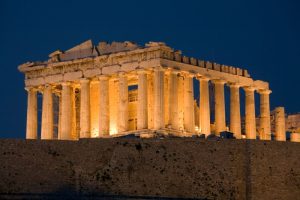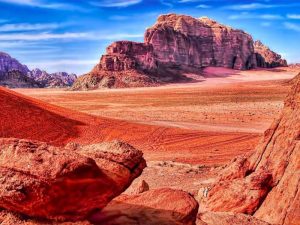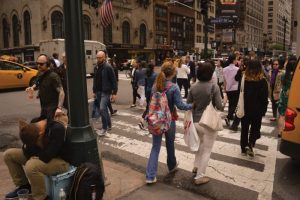
Lourdes, France, a town nestled in the foothills of the Pyrenees, holds a profound significance for millions worldwide. For over a century and a half, it has been a focal point for Catholic pilgrimage, drawing individuals seeking solace, healing, and spiritual renewal. This journey, steeped in history and faith, offers a unique blend of religious devotion, cultural immersion, and personal reflection.
The story of Bernadette Soubirous and her apparitions of the Virgin Mary forms the heart of Lourdes’ enduring appeal, transforming a humble grotto into a globally recognized sanctuary.
This exploration delves into the historical context of Lourdes, examining the events that shaped its evolution into a major pilgrimage site. We will explore the sanctuary’s architecture, the rituals and ceremonies performed by pilgrims, and the significant impact the pilgrimage has on both the local community and the lives of those who undertake the journey. Finally, we’ll compare the Lourdes pilgrimage to other significant religious pilgrimages around the world, highlighting both similarities and differences.
History and Significance of Lourdes
Lourdes, a small town nestled in the foothills of the Pyrenees Mountains in southwestern France, has transformed from an unremarkable village into one of the world’s most significant Catholic pilgrimage sites. This dramatic shift is entirely due to a series of events in the mid-19th century that catapulted Lourdes onto the global religious stage and established it as a place of healing and spiritual renewal.The extraordinary events that irrevocably altered the destiny of Lourdes began with the apparitions of the Virgin Mary to a young, impoverished girl named Bernadette Soubirous.
These apparitions, their impact on Bernadette, and the subsequent development of the sanctuary are the cornerstones of Lourdes’ enduring significance.
The Apparitions of the Virgin Mary to Bernadette Soubirous
On February 11, 1858, Bernadette Soubirous, a 14-year-old girl, experienced the first of eighteen apparitions of a lady in the Massabielle grotto. The lady, later identified as the Immaculate Conception of the Virgin Mary, communicated with Bernadette through gestures and a few words in the local dialect. Bernadette was instructed to drink from the spring that miraculously appeared at the grotto, and to spread the word of the apparitions.
These apparitions, though initially met with skepticism and even hostility, gradually gained recognition as miraculous. The unwavering faith of Bernadette, combined with reports of healings at the spring, drew increasing numbers of pilgrims to the site. The authenticity of the apparitions, though debated throughout history, remains a central element of Lourdes’ spiritual power. The detailed accounts of Bernadette’s experiences, meticulously documented, continue to inspire millions.
Development of the Sanctuary and its Infrastructure
The initial response to the apparitions was cautious and hesitant. However, as word of miraculous healings spread, the site quickly attracted a growing number of pilgrims. This led to the development of a rudimentary sanctuary around the grotto. Over time, this modest beginning evolved into the vast and complex infrastructure that characterizes Lourdes today. This evolution involved the construction of numerous churches, chapels, hospitals, and other facilities to accommodate the ever-increasing influx of pilgrims.
The growth of the sanctuary has been a continuous process, adapting to the changing needs of pilgrims and the evolving understanding of Lourdes’ spiritual significance. The construction of the Basilica of Our Lady of the Rosary, the Basilica of the Immaculate Conception, and the underground Basilica of St. Pius X are just some examples of the significant architectural developments that have shaped the landscape of the sanctuary.
Chronological Overview of Major Events and Milestones in Lourdes’ History
The history of Lourdes is rich with significant events. A chronological overview helps to illustrate the development of the pilgrimage site.
- 1858: The first apparition of the Virgin Mary to Bernadette Soubirous.
- 1862: Official recognition of the apparitions by the Catholic Church.
- 1876: Construction of the first basilica begins.
- 1907: The Basilica of Our Lady of the Rosary is completed.
- 1958: Centenary of the apparitions celebrated with a massive pilgrimage.
- 1970s-Present: Continuous expansion of the sanctuary’s infrastructure and services to meet the growing number of pilgrims.
The development of Lourdes as a major pilgrimage site reflects not only the spiritual impact of the apparitions but also the ingenuity and dedication of those who have worked tirelessly to create a welcoming and supportive environment for pilgrims from around the world. The continued growth and development of the sanctuary are a testament to the enduring power of faith and the miraculous events that transformed a small village into a globally significant place of pilgrimage.
The Sanctuary and its Features
The Sanctuary of Lourdes is a sprawling complex of religious buildings and sites, a testament to the enduring power of faith and the millions of pilgrims who have visited over the years. Its architecture reflects a variety of styles, evolving over time as the sanctuary grew to accommodate the increasing number of visitors. The overall effect is one of both grandeur and serenity, reflecting the spiritual significance of the place.The architectural style of the sanctuary is a blend of several influences, reflecting its gradual expansion and the changing tastes of different eras.
Early structures show a neo-Gothic influence, while later additions incorporate elements of Romanesque and Byzantine styles. The overall impression, however, is one of harmonious unity, despite the diverse architectural elements. The use of local stone contributes to a sense of place and continuity with the surrounding landscape.
The Grotto of Massabielle and its Significance
The Grotto of Massabielle is the heart of the sanctuary, the very spot where the Virgin Mary is said to have appeared to Bernadette Soubirous in 1858. It’s a relatively simple, naturally occurring grotto, but its religious significance is immense. The original rock face remains largely untouched, a powerful reminder of the humble setting of the apparitions. Over the years, a protective structure has been built around the grotto, but it is designed to minimize obstruction of the natural rock formation.
The grotto serves as the focal point for prayer and reflection for pilgrims, and its simple yet powerful presence resonates deeply with visitors. The water flowing from the spring at the grotto’s base, believed by many to have healing properties, is collected and distributed to pilgrims worldwide.
Chapels and Other Religious Sites
The sanctuary encompasses a wide array of chapels and religious sites, each with its own distinct character and purpose. The Basilica of Our Lady of the Rosary, built in the neo-Gothic style, is one of the most prominent structures. Its soaring spires and intricate stained-glass windows create a sense of awe and reverence. The Basilica of the Immaculate Conception, with its impressive dome and classical features, stands as another significant landmark.
The Underground Basilica of Saint Pius X, a modern structure, offers a stark contrast in style but equally profound atmosphere for prayer and reflection. In addition to these major basilicas, numerous smaller chapels and prayer areas are scattered throughout the sanctuary complex, providing spaces for individual and group devotion.
Comparison of Sanctuary Areas
The following table compares several key areas within the Lourdes sanctuary, highlighting their historical significance and architectural features:
| Area | Historical Importance | Architectural Style | Key Features |
|---|---|---|---|
| Grotto of Massabielle | Site of the Marian apparitions | Natural grotto with protective structure | Spring water, focal point of pilgrimage |
| Basilica of Our Lady of the Rosary | First major basilica built at Lourdes | Neo-Gothic | Soaring spires, stained-glass windows |
| Basilica of the Immaculate Conception | Larger and more ornate basilica | Classical/Neoclassical | Impressive dome, grand staircase |
| Underground Basilica of Saint Pius X | Modern basilica designed for large crowds | Modern | Vast underground space, simple design |
The Pilgrimage Experience

A pilgrimage to Lourdes is a deeply personal and often transformative experience. It’s a journey that blends spiritual reflection with the practicalities of travel and participation in a vibrant community of fellow pilgrims. The experience is shaped by individual faith, expectations, and the specific arrangements made for the trip, whether it’s a large organized group or a more independent visit.The typical itinerary for a pilgrim often involves a blend of religious observance and leisure activities.
A Typical Pilgrimage Itinerary
Pilgrimages to Lourdes vary in length, from a few days to a week or more. A common itinerary might include daily attendance at Mass in the Basilica of Our Lady of the Rosary or other churches within the Sanctuary. This is often followed by the procession to the Grotto, where the Virgin Mary is believed to have appeared to Bernadette Soubirous.
Time is also dedicated to personal prayer and reflection, perhaps visiting the various chapels and shrines within the Sanctuary. Many pilgrims participate in the Stations of the Cross, a devotional path reflecting on the final hours of Jesus’ life. In the evenings, there are often communal prayers and services. Free time might be used for exploring the town of Lourdes, visiting local shops, or simply relaxing and contemplating the spiritual journey.
Rituals and Ceremonies at Lourdes
The core of the pilgrimage experience centers around participation in religious rituals and ceremonies. The daily processions to the Grotto are a powerful visual representation of shared faith. Pilgrims carry candles, often singing hymns, creating a moving atmosphere. The blessing of the sick is a particularly significant event, with many pilgrims seeking healing and solace. Masses are celebrated throughout the day in various languages, catering to the international nature of the pilgrimage.
The sacrament of confession is widely available, offering pilgrims an opportunity for spiritual renewal. Personal prayer and quiet contemplation are also integral parts of the pilgrimage experience, often taking place at the Grotto or in the quieter chapels.
The Role of Support Staff
The smooth running of a pilgrimage to Lourdes depends heavily on the dedication of various support staff. Priests and other clergy members preside over services, offer spiritual guidance, and provide pastoral care. Volunteers, many of whom are members of religious orders or local organizations, play a crucial role in assisting pilgrims with various needs. This might include helping with mobility, providing translation services, or simply offering a listening ear.
Hospital staff provide medical care, and other support staff manage logistics, such as accommodation and transportation. The coordinated efforts of this diverse group ensure a welcoming and supportive environment for all pilgrims.
Personal Accounts of the Pilgrimage Experience
“The peace and serenity I found at Lourdes were unlike anything I’ve ever experienced. The sheer number of people sharing their faith was incredibly moving.”
Fictional account of Maria, a pilgrim from Italy.
“I came to Lourdes seeking healing, both physically and spiritually. While my physical ailment remains, the spiritual comfort I found was immeasurable. The atmosphere of faith and compassion was profoundly healing.”
Fictional account of Jean-Pierre, a pilgrim from France.
“The pilgrimage was a journey of self-discovery as much as a religious experience. The shared experience of faith with so many people from diverse backgrounds was deeply enriching.”
Fictional account of Sarah, a pilgrim from the United States.
Lourdes and its Impact on the Local Community

The annual influx of millions of pilgrims to Lourdes has profoundly impacted the town, shaping its economy, social fabric, and very identity. This impact extends far beyond the religious sphere, weaving itself into the daily lives of Lourdes’ residents and the town’s overall development. The economic benefits are substantial, but the social and cultural transformations are equally significant.The Economic Impact of Pilgrimages on LourdesThe pilgrimage industry is the economic backbone of Lourdes.
Millions of visitors annually contribute significantly to the local economy through various channels. Hotels, restaurants, shops, and transportation services all benefit directly from the high volume of tourists. Furthermore, the presence of numerous religious organizations and associated businesses creates a substantial number of jobs, contributing to the overall economic well-being of the town. The scale of this impact is considerable, with the pilgrimage generating significant revenue for the local government through taxes and other levies.
This revenue often funds crucial public services and infrastructure projects.
Employment and Revenue Generation
The pilgrimage to Lourdes sustains a substantial portion of the local population. The hospitality sector, including hotels, guesthouses, and restaurants, employs thousands of people, providing both full-time and seasonal jobs. Retail businesses, transportation companies (taxis, buses, and train services), and even local artisans benefit directly from the increased demand for their goods and services during peak pilgrimage seasons.
The sheer volume of pilgrims necessitates a wide range of services, creating a robust and diversified local economy that is heavily reliant on the pilgrimage. For example, the numerous souvenir shops selling religious items and local crafts represent a significant component of the town’s economic activity.
Infrastructure Development and Investment
The continuous flow of pilgrims has necessitated significant investment in infrastructure. The town has seen considerable upgrades to its transportation network, including improved roads, bus services, and train connections to facilitate the movement of large numbers of people. Accommodation facilities have also expanded and improved to cater to the varying needs and budgets of pilgrims. The constant need to accommodate such a high volume of visitors drives continuous improvement and modernization of the town’s infrastructure, ultimately benefiting both residents and visitors alike.
Investment in infrastructure, often stimulated by pilgrimage-related revenue, extends beyond tourism, impacting areas such as healthcare and sanitation.
Social and Cultural Aspects of the Pilgrimage for Local Residents
The presence of pilgrims has significantly shaped the social and cultural landscape of Lourdes. The town’s residents have adapted to the rhythm of the pilgrimage seasons, with a notable increase in activity during peak periods. This involves a shift in social interactions, as residents engage with pilgrims from diverse backgrounds and cultures. The constant exposure to a multicultural environment has enriched the social fabric of Lourdes, fostering tolerance and understanding among its inhabitants.
This constant interaction with people from across the globe has broadened perspectives and created a unique social dynamic.
The Shaping of Lourdes’ Identity
Lourdes’ identity is inextricably linked to its role as a major pilgrimage site. The town’s history, culture, and economy are all profoundly shaped by the religious significance of the site. The presence of the Sanctuary and its associated structures dominates the town’s landscape and influences its overall character. The annual pilgrimage seasons are integral to the town’s calendar, influencing local traditions and events.
The identity of Lourdes is not merely geographical; it is defined by its spiritual significance and the global community it attracts. This has resulted in a unique blend of religious devotion and secular tourism, shaping the town’s distinctive character.
Infographic Illustrating the Economic and Social Impact of Lourdes Pilgrimages
Imagine an infographic with two main sections: “Economic Impact” and “Social Impact.”The “Economic Impact” section could display a pie chart showing the percentage breakdown of revenue generated from different sectors (e.g., hospitality, retail, transportation). Below the pie chart, bar graphs could illustrate the number of jobs created in these sectors and the overall increase in local tax revenue due to pilgrimages.
A visual representation of infrastructure improvements (e.g., a before-and-after image of a key road or hotel) could also be included.The “Social Impact” section could feature a world map showing the origins of pilgrims, highlighting the diverse international community that Lourdes attracts. Images depicting cultural exchange events or interactions between local residents and pilgrims could further illustrate the social aspects.
A timeline showcasing significant historical milestones related to the growth of the pilgrimage could also be incorporated. The infographic would use vibrant colors and clear visuals to convey the complex interplay between the pilgrimage and the local community. It would emphasize the significant contribution of the pilgrimage to the economic prosperity and cultural richness of Lourdes.
Comparing Lourdes Pilgrimage to Other Religious Pilgrimages
Pilgrimages, journeys undertaken for religious purposes, hold profound significance across various faiths. While each pilgrimage possesses unique characteristics shaped by its specific religious context and geographical location, common threads of spiritual seeking, communal bonding, and personal transformation weave through them all. This section compares the Lourdes pilgrimage with those to Mecca, Jerusalem, and Santiago de Compostela, highlighting similarities and differences in the experience.
The diverse nature of religious pilgrimages reflects the multifaceted expressions of faith worldwide. Factors such as the pilgrimage’s length, the rituals involved, the type of accommodation available, and the overall cost significantly influence the pilgrim’s experience. Examining these factors allows for a more comprehensive understanding of the shared and distinct aspects of these significant religious journeys.
A Comparative Analysis of Pilgrimage Experiences
| Aspect | Lourdes | Mecca (Hajj) | Jerusalem | Santiago de Compostela |
|---|---|---|---|---|
| Duration | Varies greatly; from a single day to several weeks, depending on the pilgrim’s group and purpose. | Typically lasts around 5-6 days, encompassing specific rituals performed on particular days. | Varies; can range from a few days to several weeks, depending on the individual’s goals and the sites visited. | Can range from a few days to several weeks, often incorporating walking portions of the Camino de Santiago. |
| Rituals | Prayer, processions, bathing in the waters of the Lourdes grotto, participation in Mass, lighting candles, and seeking blessings. A focus on healing and miraculous interventions. | Specific rituals and prayers at designated times and locations within the holy sites of Mecca and Medina, including the circumambulation of the Kaaba and the stoning of the devil. Emphasis on purification and submission to God. | Prayer, visiting holy sites like the Western Wall, Church of the Holy Sepulchre, and Via Dolorosa, often including specific prayers and rituals at each site. Focus on historical and religious significance of the location. | Walking the Camino de Santiago, a network of pilgrimage routes leading to the Cathedral of Santiago de Compostela, often involving prayer and reflection along the way. A focus on spiritual growth and personal journey. |
| Accommodation | Ranges from budget-friendly hostels and hotels to more luxurious accommodations, depending on the pilgrim’s budget and group. Many pilgrims stay in dedicated pilgrimage centers. | Accommodation varies widely, ranging from tents in designated camping areas to more comfortable hotels, depending on affordability and preference. Often involves shared facilities. | A broad spectrum of accommodations is available, ranging from budget hotels to luxury accommodations. Proximity to holy sites influences cost and availability. | Diverse options, including hostels, hotels, and guesthouses along the Camino routes, offering varying levels of comfort and cost. Many pilgrims choose simpler accommodations to enhance the spiritual experience. |
| Cost | Highly variable, influenced by travel costs, accommodation, and length of stay. Organized pilgrimages offer packaged deals, while independent travel allows for more budget control. | The Hajj is a significant financial commitment due to travel, accommodation, and ritual expenses. Financial assistance is available for those who cannot afford it. | Costs vary significantly based on travel arrangements, length of stay, and type of accommodation. Independent travel can be more affordable than organized group tours. | Costs vary depending on the chosen route, duration, and accommodation. Walking the Camino can be relatively inexpensive, while utilizing other forms of transport increases expenses. |
Lourdes and Alternative Travel Styles
Lourdes, a site of profound religious significance, offers a unique travel experience centered on faith and spiritual reflection. However, the region also presents opportunities for a diverse range of alternative travel styles. Comparing and contrasting Lourdes pilgrimages with other travel types reveals the distinct nature of this particular journey and highlights the broader spectrum of travel experiences available.
Lourdes Pilgrimage Compared to Wildlife Watching
A Lourdes pilgrimage prioritizes spiritual reflection and participation in religious ceremonies, such as processions and Mass. The environment is primarily focused on the Sanctuary and its immediate surroundings, with activities revolving around prayer, confession, and the potential for miraculous healing. In contrast, wildlife watching emphasizes observation of animals in their natural habitats. Activities include hiking, birdwatching, and photography, all focused on experiencing the natural world.
The environments are drastically different: one intensely human-focused and spiritually charged, the other focused on the untouched beauty of nature. The purpose is fundamentally distinct: spiritual enrichment versus natural appreciation.
Lourdes Pilgrimage Compared to Winter Sports Trips
The Lourdes pilgrimage centers around religious observance and spiritual growth, taking place in a relatively calm and peaceful environment. Activities are primarily devotional. Winter sports trips, conversely, are focused on physical activity and thrill-seeking in a snowy mountainous environment. The purpose of a winter sports trip is recreation and adrenaline, while a pilgrimage seeks spiritual renewal. The environments are completely different: a serene town versus a dynamic, often challenging, snowy landscape.
Lourdes Pilgrimage Compared to Island Hopping
Island hopping involves exploration of various islands, often characterized by diverse landscapes, cultures, and activities. The purpose is typically relaxation, adventure, and cultural discovery. A Lourdes pilgrimage, on the other hand, is intensely focused on a single location and a singular spiritual purpose. The environment is primarily urban and religious, while island hopping offers a variety of natural and cultural environments.
The activities are vastly different: exploring beaches, snorkeling, and experiencing local cultures versus participating in religious rituals and prayer.
Lourdes Pilgrimage Compared to Voluntourism
Lourdes pilgrimages are inwardly focused, concentrating on personal spiritual growth and connection with the divine. Voluntourism, however, emphasizes contributing to a community through service. Activities involve working on projects that benefit the local population, focusing on outward action and social impact. While both can offer a sense of fulfillment, the motivations and actions are fundamentally different. The environment for voluntourism is varied depending on the project, while Lourdes is centered around the Sanctuary.
Lourdes Pilgrimage Compared to Photography Tours
Photography tours prioritize capturing images of specific locations or subjects, with activities centered around finding the best photographic opportunities. The environment is adapted to the photographic subject, which can range widely. A Lourdes pilgrimage, while potentially offering photographic opportunities, is not primarily focused on image-making. The core purpose is spiritual; photography may be a secondary activity.
Lourdes Pilgrimage Compared to Festival Travel
Festival travel centers around attending and experiencing cultural or musical festivals. The environment is vibrant and often crowded, with activities focused on participation in festivities. A Lourdes pilgrimage, while having periods of communal activity, is less about festive celebration and more about personal reflection and prayer. The purpose is vastly different: entertainment and cultural immersion versus spiritual renewal.
Lourdes Pilgrimage Compared to Desert Expeditions
Desert expeditions focus on exploration and endurance in challenging desert environments. Activities include hiking, camping, and navigating harsh conditions. The purpose is often adventure and self-discovery through overcoming physical and mental challenges. A Lourdes pilgrimage, in contrast, takes place in a relatively comfortable and accessible urban setting. The environment and purpose are vastly different: a challenging natural environment versus a peaceful, faith-based environment.
Lourdes Pilgrimage Compared to Underwater Adventures
Underwater adventures focus on exploring marine environments through scuba diving, snorkeling, or other water-based activities. The environment is completely submerged, with activities focused on observing marine life and exploring underwater landscapes. A Lourdes pilgrimage, taking place on land, offers a completely different environment and experience. The purpose is also vastly different: underwater exploration and marine appreciation versus spiritual growth.
Lourdes Pilgrimage Compared to Art and Architecture Tours
Art and architecture tours focus on appreciating artistic and architectural creations, with activities including guided tours, museum visits, and photography. The environment is centered around buildings and art, with activities focusing on aesthetic appreciation and learning about the history and significance of the works. A Lourdes pilgrimage, while featuring significant architecture, is not primarily focused on art appreciation. The purpose is spiritual rather than artistic or historical.
Illustrative Depictions of Lourdes
Lourdes’ history and enduring significance are powerfully conveyed through various artistic mediums. Paintings and photographs, in particular, capture specific moments and the overall atmosphere of pilgrimage, offering a glimpse into the profound experiences of those who journey there. Fictional narratives further illuminate the emotional depth of the pilgrimage experience.
A Painting of the Apparitions
Imagine a painting depicting the first apparition of the Virgin Mary to Bernadette Soubirous in 1858. The scene is set in the Massabielle Grotto, a damp, dimly lit cave. The colors are muted, dominated by earthy browns and greys of the rock face, contrasted by the ethereal glow emanating from the Virgin Mary, rendered in soft, luminous whites and blues.
Bernadette, a young girl, is depicted kneeling, her face a mixture of awe and wonder, her simple clothing a stark contrast to the heavenly figure before her. The overall mood is one of hushed reverence, a sacred moment captured in time, with a palpable sense of the divine presence. The artist might subtly include details of the surrounding landscape, hinting at the stark beauty of the Pyrenees Mountains, further emphasizing the setting’s spiritual significance.
The light source appears to originate from the Virgin Mary herself, casting a gentle radiance upon Bernadette, enhancing the otherworldly quality of the encounter.
A Photograph of a Pilgrimage
A photograph taken during a contemporary pilgrimage to Lourdes captures the sheer scale and intensity of the event. Thousands of pilgrims, a sea of faces, fill the esplanade before the Basilica of Our Lady of the Rosary. The lighting is a mix of natural daylight and the warm glow of countless candles illuminating the faces of the devout.
The atmosphere is one of profound faith and shared emotion. The expressions on the pilgrims’ faces range from quiet contemplation to fervent prayer, their diverse backgrounds uniting them in a shared spiritual journey. The image might focus on a particular group of pilgrims – a family, a group of friends, or a single individual – offering a more intimate perspective on the collective experience.
The overall mood is one of hope, community, and shared spiritual purpose, capturing the essence of Lourdes as a site of profound religious significance.
A Pilgrim’s Emotional Journey
Elara, a woman burdened by years of grief and uncertainty, arrives in Lourdes feeling fragile and lost. The initial days are a blur of crowds and rituals, leaving her feeling overwhelmed. However, as she spends time in the Grotto, a quiet peace begins to settle over her. She watches as pilgrims of all ages and backgrounds share their prayers and hopes, finding comfort in the shared experience of faith.
One evening, while watching the candlelight procession, a wave of emotion washes over her, a release of the pent-up sorrow she’d carried for so long. She feels a sense of connection to something larger than herself, a sense of hope rekindled. The healing she experiences is not necessarily physical, but a deep, profound emotional healing, a sense of renewed purpose and a quiet acceptance of the past.
She leaves Lourdes feeling lighter, her spirit renewed, carrying with her a newfound sense of peace and a deeper understanding of faith and its transformative power.
Final Thoughts
A pilgrimage to Lourdes is far more than a simple trip; it’s a deeply personal and transformative experience. Whether driven by faith, a desire for healing, or a quest for spiritual growth, the journey to this sacred site leaves an indelible mark on the hearts and minds of all who undertake it. The blend of history, faith, and community creates a unique atmosphere, making Lourdes a place of profound spiritual and emotional resonance.
From the awe-inspiring architecture of the sanctuary to the quiet contemplation at the Grotto of Massabielle, Lourdes offers a powerful testament to the enduring power of faith and the human search for meaning.
General Inquiries
What is the best time of year to visit Lourdes?
Spring and autumn offer pleasant weather and fewer crowds than the peak summer months.
How much does a pilgrimage to Lourdes typically cost?
Costs vary greatly depending on travel arrangements, accommodation, and length of stay. Budgeting is essential, as costs can range from economical to quite luxurious.
Are there accommodations available for pilgrims with disabilities?
Yes, Lourdes offers a range of accessible accommodations and facilities to cater to pilgrims with diverse needs.
What languages are spoken in Lourdes?
French is the official language, but English and other languages are widely spoken, particularly in tourist areas and the sanctuary.
How can I get to Lourdes from the nearest airport?
Lourdes – Tarbes – Pyrénées Airport (LDE) is the closest airport. Buses and taxis are readily available for transportation to the town center.





